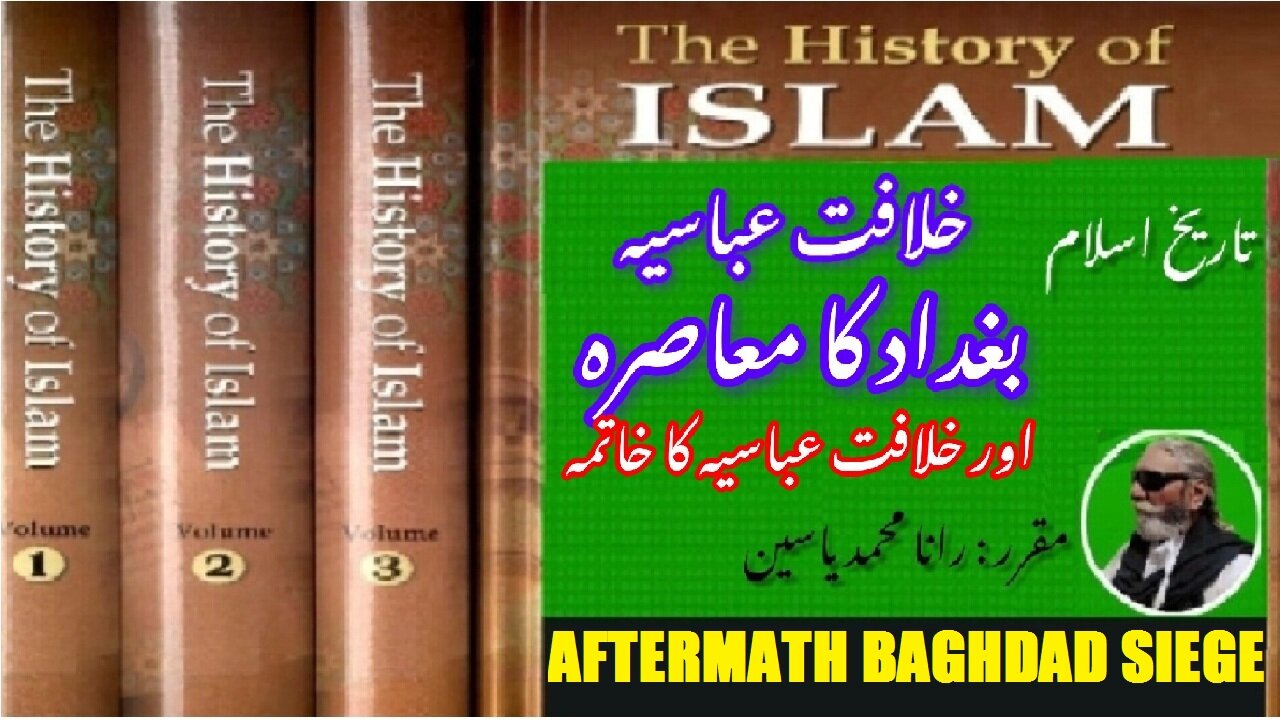Premium Only Content

Aftermath Baghdad Siege and end of Abbasid Caliphate بغداد کا محاصرہ اور خلافت عباسیہ کا خاتمہ
@islamichistory813 #FallOfBaghdad #IslamicHistory #CaliphateDecline
Aftermath Baghdad Siege and end of Abbasid Caliphate.
Dekhti Aankhooon aur sountay kaanoon ko Asslamoalaikum, sisters, brothers friends and elders, In these Islamic Caliphate informative videos, we are describing aftermath the Baghdad Siege and its role in the dissolution of the Abbasid Caliphate. Through a detailed narrative, we highlight the key events that led to the siege, the immediate effects on the city of Baghdad, and the broader implications for the Islamic empire. please be with us and watch complete video and share with your friends so that they also be benifit as we are describing the complexities of this historical turning point.
Hulaku left 3,000 Mongol soldiers behind to rebuild Baghdad. Ata-Malik Juvayni was later appointed governor of Baghdad, Lower Mesopotamia, and Khuzistan after Guo Kan went back to the Yuan dynasty to assist Kublai's conquest over the Song dynasty. Hulaku's Nestorian Christian wife, Dokuz Khatun, successfully interceded to spare the lives of Baghdad's Christian inhabitants. Hulaku offered the royal palace to the Nestorian Catholicos Mar Makikha, and ordered a cathedral to be built for him.
Initially, the fall of Baghdad came as a shock to the whole Muslim world; after many years of utter devastation, the city became an economic center where international trade, the minting of coins and religious affairs flourished under the Ilkhans. The chief Mongol darughachi was thereafter stationed in the city.
Berke, who had converted to Islam in 1252, became enraged that Hulagu destroyed Baghdad. Muslim historian Rashid al Din quoted Berke Khan as sending the following message to Mongke Khan, protesting the attack on Baghdad, (not knowing Mongke had died in China): "He (Hulagu) has sacked all the cities of the Muslims. With the help of God I will call him to account for so much innocent blood."
Although hesitant at first to go to war with Hulaku out of Mongol brotherhood, the economic situation of the Golden Horde led him to declare war against the Ilkhanate. This became known as the Berke–Hulagu war.
The tomb of the Abbasid caliph Abdallah al-Mustasim Billah in the Al-Musta'sim Billah Mosque, restored in 2005
Al-Musta'sim ruled from 5 December 1242 to 20 February 1258, for a period of 15 years, 2 months and 15 days. His death marked the final end of the caliphate as a political and religious entity. The Mamluk Sultans of Egypt and Syria later appointed an Abbasid prince as caliph of Cairo, but these Mamluk Abbasid caliphs were marginalized and merely symbolic, with no temporal power and little religious influence. Even though they kept the title for about 250 years more, other than installing the Sultan in ceremonies, these caliphs had little importance. After the Ottomans conquered Egypt in 1517, the caliph of Cairo, al-Mutawakkil III was transported to Constantinople.
So sisters brothers friends and elders, we are going to described tomorow Biography of Sultan Tughril 1st Sultan of Seljuk Empire. Allah Hafiz
======================================================
-
 1:23
1:23
ISLAMIC HISTORY
5 hours agoSurah At Taubah Verse No 85 تلاوت َسورة اَلتَّوْبَة اردو اور انگریزی ترجمے کے ساتھ آیت نمبر
4 -
 3:19:06
3:19:06
GrimmHollywood
7 hours ago🔴LIVE • GRIMM'S TUESDAY FRIGHT NIGHT • STARRING GRIMM HOLLYWOOD • NO, I'M NOT HUMAN PART 1 •
41.3K2 -
 1:21:01
1:21:01
Flyover Conservatives
14 hours agoAI Encouraged Suicide: The Global Experiment on Our Kids - Joe Allen | FOC Show
52.3K4 -
 1:07:40
1:07:40
Glenn Greenwald
8 hours agoTucker Carlson on Charlie Kirk Assassination Fallout, Free Speech, Foreign Policy, and the Reaction to his Kirk Remarks | SYSTEM UPDATE #520
188K141 -
 14:22
14:22
Robbi On The Record
2 days ago $4.37 earnedGen Z’s Narcissism Obsession: Why Everyone’s a “Psychologist”
48.8K14 -
 8:15:08
8:15:08
GritsGG
9 hours agoQuad Win Streaks!🫡 Most Wins in WORLD! 3600+
65.1K2 -
 1:09:28
1:09:28
Sarah Westall
6 hours agoCan the World Be This Strange? The Nature of Our Reality w/ Darius J Wright
43.5K4 -
 1:58:20
1:58:20
megimu32
7 hours agoOn The Subject: Friends | 31 Years of the Sitcom That Defined a Generation
40K5 -
 30:00
30:00
BEK TV
1 day agoCounter Culture Mom
13.1K -
 1:24:54
1:24:54
Kim Iversen
10 hours agoTylenol vs Vaccines: Which One Is The REAL Cause Of Autism? The Truth Will Upset You
67.5K82